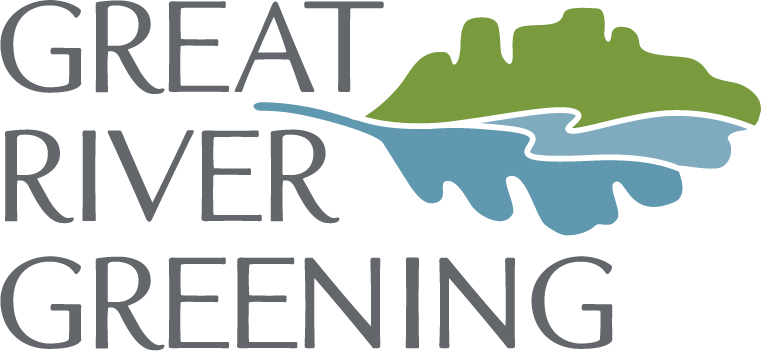Biochar initiative
Great River Greening is at the forefront in MN of expanding the practice of processing waste wood in biochar kilns as part of natural management.
Great River Greening is dedicated to expanding the practice of processing waste wood in specialized flame capped kilns for sustainable land management. Not only do we incorporate biochar into our restoration projects, we also work throughout Minnesota to educate leaders, fire marshals, land managers, and conservation professionals on how to implement biochar and expand its benefits.
By leading this effort and sharing our expertise, we aim to make open pile burns a thing of the past, making biochar the go-to land management solution across Minnesota. With a variety of kilns at our disposal, we have the flexibility to choose the right equipment based on the biomass volume and specific needs of each project.
Our Services
Great River Greening is one of the first in the state of Minnesota to move biochar production forward as part of natural systems management combining the following:
CONVERT WOOD WASTE INTO BIOCHAR ON SITE: Hire our Greening Solutions crew! Working with your schedule, our trained crew implements the process on site efficiently and effectively.
WE ARE MOBILE: We offer on-site services throughout Minnesota. Are you in western Wisconsin? Reach out to see if we are able to assist.
EDUCATION and DEMONSTRATIONS: We can train your staff or stakeholders on how to best implement biochar for your setting.
PARTNERSHIP: Great River Greening works with all varieties of land management professionals, including other service providers, municipalities, nonprofits, corporations, private landowners, and more.
RENTAL: We have several kilns available for rent.
BB10 Big-Box Biochar Kiln
Capacity: 9 cu yard biochar
Our new mobile big-box biochar kiln is the first of its kind in the state. Each usage cycle—ranging from ignition to quenching—produces 9 cubic yards of biochar, with the capability for two loads per day.
Ring of Fire
Capacity: 5 cu yard biochar
An expandable kiln that can be broken down into pieces, and made into different sized depending on the needs.
Oregon Kilns
Capacity: 1.5 cu yard biochar
Our traditional flame-capped kilns—also known as Oregon kilns.
What is biochar?
Biochar is a type of char produced by heating organic material (biomass)—such as wood and plant waste—in a high-temperature, low-oxygen environment. Sometimes described as “supercharged charcoal,” biochar plays a key role in long-term carbon sequestration by locking up to 80% of the carbon in that material in a stable, solid form, preventing it from re-entering the atmosphere as carbon dioxide.
Biochar also improves soil health and structure, enhances water retention, boosts nutrient availability, and even helps remediate contaminated soils. It’s a versatile, multi-purpose tool that supports both land restoration and sustainable agriculture.
How is biochar created?
Land restoration efforts, such as removing buckthorn and other invasive trees and shrubs, often generate large amounts of biomass waste. Traditionally, this waste has been disposed of through open pile burning, which not only releases harmful greenhouse gases but also degrades soil and air quality.
Processing this wood waste in specialized biochar kilns is an alternative to open pile burns that restores degraded land, mitigates climate change, improves soil and water quality. Biochar kilns provide a more sustainable alternative, transforming this waste into a valuable resource while minimizing harmful emissions.
Benefits of Biochar
Carbon Storage: When biochar is buried in soil, it locks away carbon for hundreds, even thousands of years. This process helps reduce the amount of CO2 released in the atmosphere.
Soil Health: Biochar enhances soil structure, promotes microbial life, and improves nutrient retention.
Waste Reduction: Biochar is made from waste materials—wood waste, crop residues, and even municipal waste— transforming potential pollutants into a valuable resource.
Water Conservation: Thanks to its porous nature, biochar acts like a sponge and helps soil retain moisture, reducing the need for irrigation and making plants more drought-resistant.
The program partially funded by Center Point Energy Foundation, the Environment and Natural Resources Trust Fund as recommended by the Legislative-Citizen Commission on Minnesota Resources (LCCMR), and the National Association of Conservation Districts.










